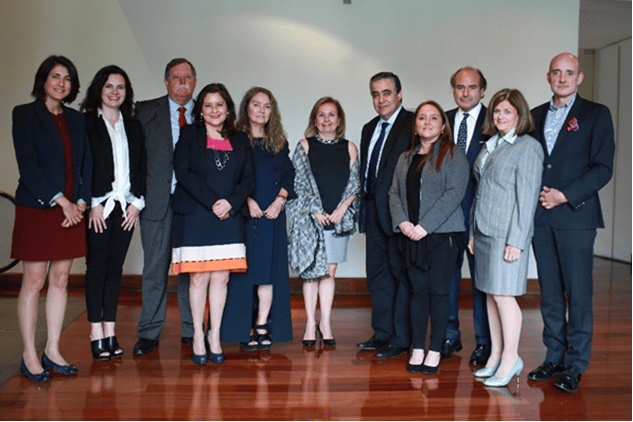Women Leaders – Building a Balanced Workforce
[Ed: Last week, Anne Glenn laid out the key hurdle limiting the number of women leaders. Here, she looks at solutions]
For women just beginning their careers, “promotion gaps” at a pre-managerial level create the biggest single hurdle for their future and the futures of businesses that currently employ them.
Nearly 30% of women recently hired at the very bottom of the managerial promotion process miss a critical “first rung” promotion opportunity. Their male counterparts do not. As a consequence, men’s careers charge ahead, while almost one-third of women’s careers are left behind.
The newly identified “broken rung gap” challenges all businesses who believe a diverse workforce is among the most important driving strategies for their own successful futures. Among these companies, 73% of leaders said achieving diversity in their workplaces was a top priority. (“Women in the Workplace 2019”).
“Bias does continue to have a role in promoting women managers”, says Carolyn Tasted, Group President, Procter & Gamble, North American Operations in the report. “But achieving business results means that we have to find a way to pull all our talent up through the pipeline.”
The tools, partners and experience needed to drive this change initiative are the same ones used during 2015-2019 to grow women in executive leadership teams by 42%. This time, the focus shifts from the top level of the organization to the very bottom.
Five Must-do Steps
Here are five components used in the past to “crack the glass ceiling” which must be revised and applied to the lowest employment levels until diversity is firmly established as company policy and operational practice.
- 1. Hold managers accountable for increasing gender parity at all levels.
- 2. Set goals for getting women into first-level management positions. Put targets in place that set goals for hiring and promotions plus other processes that directly shape employee representation.
- 3. Deliver promotional opportunities with transparency, fairness and a goal of diverse candidate slates for all management level positions.
- 4. Make meaningful corrections to lower bias in performance and promotion reviews.
- Require training in unconscious bias for all evaluator levels. Unconscious bias can play a large role in decisions about who is hired, promoted or left behind. Many companies may be less likely to provide training to evaluators at the important, lowest decision- making levels.
- Establish clear evaluation and promotion criteria (with the right processes and tools) before any hiring or promotion processes begin. Be certain the criteria gather only subjective, measurable inputs. Start with job descriptions using language that is gender neutral.
- 5. Put more women in line for the first step up to management
- Allow them to get the experience they need
- Give them opportunities to raise their profile in the organization – leadership training, high visibility assignments, sponsorships, mentorships and high potential development programs and key skills
As business leaders work through the planning steps above, it is important to remember that the true goal of diversity is “providing equal opportunity and fairness to everyone in the workforce.” All have equal access to the same opportunities and the system works for everyone. When an issue gets in the way of a “good for all” vision, management must address the barrier immediately.
Opportunity and fairness are the top two predictors of employee satisfaction. The happier employees are, the more likely they are to stay with the company and recommend working there to others. Employee satisfaction then fuels business success.
The “Women in the Workplace 2019” study proved just how elusive fairness in American business may be in the employees’ minds. Most individual employees interviewed believed they personally had an opportunity where they were working, but they were not certain the “system” was fair to everyone.
Fairness is Critical
Less than one-half of the people believed the best opportunities went to the most deserving candidates and less than 25% believed that only the most qualified candidates were promoted to managers. Based upon these replies, “fairness” is clearly important to both men and women equally.
When diversity is well aligned with sound corporate business strategies, it positively impacts an organization.
Successful diversity alignment inside a company means that D&I is fully integrated into the organization’s planned objectives and business goals. Well aligned organizations enjoy higher rates of employee satisfaction and success with new hires (33%) and fewer resignations (13%) compared with un-aligned (24%) businesses.
Company reputations also grow with D&I. In well aligned companies, 66% of the workforce and leadership believe that financial performance is positively transformed as compared to un-aligned businesses (27%).
Diversity and Inclusion is almost mandatory in companies which serve, or hope to serve, global markets. Their employee populations must reflect the geographies of the customer they serve. Global workforces must find ways to operate and go to market that cannot be achieved by only one, homogenous set of employees. They need people who continue to bring different perspectives and experiences into the business.
Inclusive, fair leadership processes begin at the top of any organization. In the USA, there is a CEO Diversity Pledge that is signed and publicly displayed to show employees, potential employees, customers and partners that the business is committed to a diverse workplace environment. Participating companies also clarify three or four related goals they want to accomplish and then focus upon them until they are extended throughout the entire organization.
For help, look to executive recruiting firms. Particularly those with international bases of business can offer assistance and partnership in “first rung gap” solutions. They have tools, experts and experience in each one of the five critical elements of successful diversity and inclusion programs.
Cornerstone International Group is one of those firms both motivated and equipped to help business leaders to understand the rewards of D&I and the means to attain it. Our members include leading international authorities on diversity in the workforce.
Use this link to chat or request the latest Cornerstone global survey on women in leadership: editor@cornerstone-group.com








